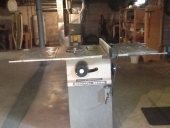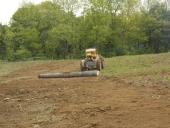A better way to do this:
* You want a reservoir of cold. This can be blocks of ice. Or pop bottles of frozen salt water.
* You want various size storage rooms, well insulated from both the world, and from the cold room.
* You want to connect the cold room to each storage room with a duct and a fan with a spring or weight loaded louvers.
* You want a bunch of thermostats.
In operation each room has a thermostat. When that room gets to warm, the thermostat runs a fan pulling air from the cold room, and returning it to the cold room. You may need a secondary fan for mixing the air in the room. Perhaps a double thermostat. Initially it turns on the mixing fan, then if that isn't sufficient calls for cold air.
You will get a slight increase in efficiency if the air ducts are cascaded; Each room pulls air from the room only slightly colder that it is.
You will get a big increase in efficiency if you normally enter each room from above. Cold air is heavy, and so will flow out an normal door. You can sometimes see this when you open an upright freezer door on a humid summer day. That said, having wheelbarrow access during cleanup times is a big win. If you can't to this, set up a derrick above the entrance to make it easier to raise and lower quantities of stuff.







